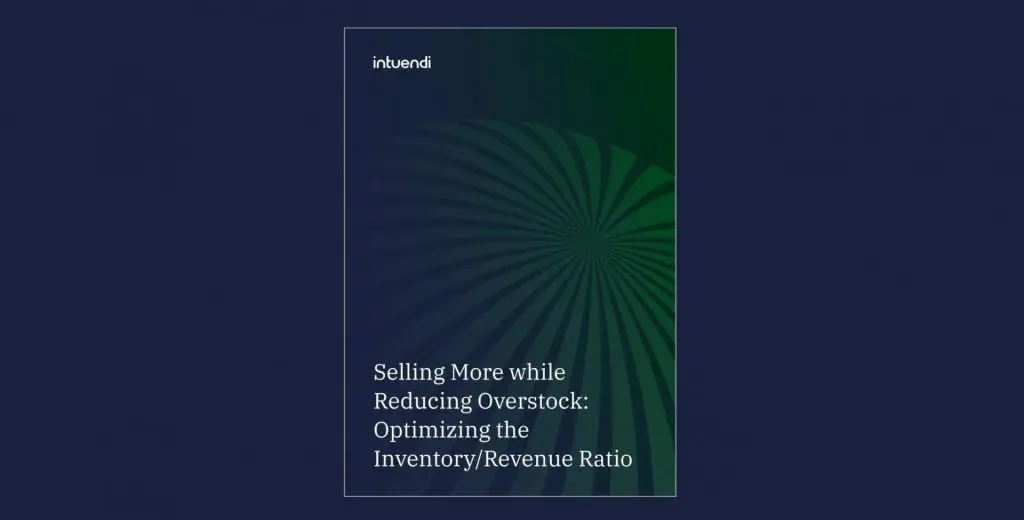This comprehensive guide explores 30 essential strategies and methods designed to revolutionise inventory management. From time-tested techniques to innovative technologies, the article offers insights tailored for both small business owners and experienced supply chain professionals. Readers will discover actionable approaches to optimise inventory levels, minimise costs, and improve customer satisfaction, enabling businesses to operate with agility and precision in an ever-evolving market landscape.
What is an Inventory Management Strategy?
An inventory management strategy serves as a structured approach to handling the sourcing, storage, and sale of both raw materials and finished goods. It ensures a seamless flow of inventory from production facilities to warehouses and ultimately to customers. Effective strategies strike a balance between overstocking and stockouts, optimise resources like storage space and workforce, and respond proactively to market changes. At its core, a strong inventory strategy enhances operational efficiency, reduces costs, and aligns stock levels with customer demand, driving long-term profitability and business resilience.
Discover Unrivalled Efficiency
Top 30 Inventory Management Strategies
This collection of inventory management strategies equips businesses with a variety of tools and techniques to tackle the complexities of stock control. Each strategy presents distinct benefits and practical applications, enabling companies to optimise inventory levels, minimise costs, and enhance operational efficiency. Whether aiming to reduce waste, streamline supply chains, or meet fluctuating customer demand, these strategies offer a blueprint for sustainable business growth and success.
1. Demand Forecasting
Demand forecasting blends data analysis and predictive modelling to anticipate future customer demand. Accurate forecasts prevent overstocking, which incurs storage costs, and understocking, which risks lost sales and dissatisfied customers. Techniques range from historical trend analysis to advanced machine learning algorithms that consider seasonality, economic shifts, and marketing efforts. For example, a retailer might predict demand for Christmas decorations using historical data adjusted for economic trends and promotional campaigns. Tools such as forecasting software and analytics platforms enhance precision and efficiency.
2. ABC Analysis
ABC analysis categorises inventory into three groups based on value and sales frequency:
- A Items: High value, low frequency (e.g., diamond necklaces).
- B Items: Moderate value, moderate frequency (e.g., silver rings).
- C Items: Low value, high frequency (e.g., cleaning cloths).
This method helps businesses prioritise resources, focusing more on “A” items due to their significant contribution to inventory value.
3. Safety Stock
Safety stock acts as a buffer against unexpected demand spikes or supply chain delays. It ensures consistent order fulfilment despite uncertainties. Factors like lead time variability, demand fluctuations, and service level targets inform safety stock calculations. For instance, a manufacturer might hold extra critical components to avoid disruptions caused by supplier delays.
4. Reorder Points
Reorder points mark the inventory level at which new stock orders are triggered, balancing stock availability and holding costs. The calculation typically considers lead time and average daily usage. For example, if daily sales average 10 units and lead time is five days, the reorder point would be 50 units, plus any safety stock.
5. Just-in-Time (JIT) Inventory
JIT inventory management reduces storage costs by receiving goods only when they’re immediately needed. This approach demands seamless coordination with suppliers and efficient logistics. It thrives in predictable manufacturing environments. For example, an automotive manufacturer might receive parts just hours before they’re needed on the assembly line, minimising excess inventory and waste.
6. Materials Requirement Planning (MRP)
MRP is a system designed to plan and schedule the materials required for production. It calculates the quantities of raw materials, components, and subassemblies needed based on forecasted demand and production schedules. This approach ensures materials are available when needed, preventing production delays and minimising inventory costs. For example, a furniture manufacturer might use MRP to calculate precise quantities of wood, fabric, and hardware to meet production targets efficiently.
7. Economic Order Quantity (EOQ)
EOQ calculates the ideal order quantity that minimises the combined costs of ordering and holding inventory. This model balances the trade-off between order frequency and storage expenses, considering factors such as demand, ordering costs, and holding costs. For instance, a retailer might use EOQ to determine the most cost-effective quantity of a product to order, reducing unnecessary expenses.
8. Minimum Order Quantity (MOQ)
MOQ refers to the smallest quantity a supplier is willing to sell in a single order. This threshold ensures profitability for suppliers while requiring businesses to plan orders carefully to avoid overstocking. For example, a clothing manufacturer might set an MOQ of 100 units per style to cover production setup costs efficiently.
9. Perpetual Inventory Management
Perpetual inventory management continuously tracks inventory levels in real time using technologies like point-of-sale (POS) systems and ERP software. This system ensures accurate, up-to-date stock information, allowing businesses to make informed decisions about purchasing, production, and sales. For instance, a retail store can instantly track stock movements after each transaction, ensuring timely replenishment.
10. Inventory Optimisation
Inventory optimisation balances demand, costs, and availability to maintain optimal stock levels. It leverages historical data, demand forecasts, and advanced algorithms to streamline inventory across multiple locations. For example, a distributor might use inventory optimisation software to monitor sales trends and adjust stock across warehouses, reducing holding costs while ensuring product availability.
11. Inventory Tracking
Inventory tracking monitors the movement and location of inventory items throughout the supply chain. Techniques include barcodes, RFID tags, and serial numbers, with batch tracking offering additional traceability for groups of products. This is crucial for quality control and recalls. For instance, a food manufacturer might use batch tracking to identify and recall specific product batches in case of contamination.
12. FIFO and LIFO
FIFO (First-In, First-Out) and LIFO (Last-In, First-Out) are inventory accounting methods. FIFO assumes the oldest stock is sold first, making it ideal for perishable goods, while LIFO assumes the newest stock is sold first, which can reduce taxable income during periods of rising costs. For example, grocery stores typically use FIFO to ensure older products are sold before expiration.
13. Consignment Inventory
Consignment inventory is an arrangement where suppliers place goods with retailers, but payment is only made when items are sold. This reduces upfront costs and risks for retailers, while suppliers retain ownership until sale. For example, a bookstore might stock consigned books from a publisher, paying only for sold copies.
14. Dropshipping
Dropshipping eliminates the need for retailers to hold stock. Instead, customer orders are passed directly to manufacturers or wholesalers, who handle shipping. This reduces storage costs but requires reliable supplier relationships and seamless communication. For example, an online store selling home decor might ship products directly from manufacturers to customers.
15. Cross-Docking
Cross-docking involves unloading goods from incoming trucks and directly loading them onto outbound trucks without long-term storage. This minimises handling time and storage costs, ideal for perishable goods or high-demand items. For instance, a grocery distribution centre might move fresh produce directly from delivery trucks to outbound vehicles, ensuring freshness and efficiency.
16. Inventory Management Software
Inventory management software automates tasks such as tracking stock levels, managing orders, and generating reports, offering real-time inventory visibility. Advanced systems integrate demand forecasting, analytics, and business tools, reducing manual errors and saving time. When selecting software, businesses should consider scalability, ease of use, integration capabilities, and cost to align with long-term needs.
17. Automation
Automation enhances inventory management accuracy and efficiency through tools like barcodes and RFID technology. Barcodes allow electronic scanning of product information, while RFID tags enable automated tracking without line-of-sight scanning. For instance, warehouses can use RFID to monitor goods’ movement, reducing errors and manual effort.
18. Vendor Managed Inventory (VMI)
VMI shifts inventory management responsibility to the supplier, who monitors stock levels, forecasts demand, and replenishes inventory as needed. This reduces the operational burden on customers and enhances efficiency. For example, a beverage manufacturer might manage stock levels at a retail store, ensuring timely replenishment without manual orders.
19. Kanban System
The Kanban system uses visual signals, such as cards, to trigger inventory replenishment based on real-time consumption. This pull-based method minimises waste and ensures timely stock availability. For example, a manufacturing plant might use Kanban cards to request more materials for production lines.
20. Cycle Counting
Cycle counting involves regularly auditing small portions of inventory to ensure accuracy without disrupting daily operations. This ongoing method replaces large-scale physical inventory counts. For example, a retailer might count one section of inventory daily, ensuring consistent and accurate records over time.
21. Push and Pull Systems
Push and pull systems represent two distinct inventory management approaches. A push system relies on demand forecasts to push inventory through the supply chain, which can lead to overstocking if predictions are inaccurate. In contrast, a pull system responds to actual demand, replenishing inventory only when needed, reducing waste and aligning stock levels with real-time customer needs. For example, a fast-food restaurant using a pull system prepares food only after an order is placed, ensuring freshness and minimising waste.
22. Lot Control and Traceability
Lot control and traceability track inventory batches using unique identifiers. This system ensures compliance, enhances quality control, and facilitates efficient recall management. Serialized tracking assigns individual serial numbers to items for granular visibility. For instance, a pharmaceutical company might use lot control to track medication batches, enabling swift identification and recall of defective products if needed.
23. Reverse Logistics
Reverse logistics manages the return flow of goods from customers back to retailers or manufacturers. It focuses on recovering value through resale, refurbishment, or recycling while enhancing customer satisfaction with smooth return processes. For example, an electronics retailer might handle product returns for repairs or replacements, reducing customer dissatisfaction and product waste.
24. Lean Inventory Management
Lean inventory management aims to reduce waste and increase efficiency through methodologies like value stream mapping, continuous improvement, and just-in-time (JIT) production. Lean Six Sigma principles often identify and address inefficiencies in inventory processes. For example, a manufacturing company might use Lean Six Sigma to optimise storage layouts, reducing handling time and storage costs.
25. Supplier Performance Monitoring
Supplier performance monitoring evaluates suppliers on metrics like delivery timelines, product quality, and responsiveness. This fosters reliable partnerships and mitigates supply chain risks. For example, a company might use a supplier scorecard system to assess performance and ensure suppliers meet contractual and operational standards consistently.
26. Collaboration and Communication
Successful inventory management relies on effective collaboration and clear communication across departments and stakeholders. Cross-functional teamwork ensures alignment on goals, enhances decision-making, and boosts operational efficiency. For example, a retail business might hold regular meetings between sales, marketing, and procurement teams to align demand forecasts and inventory needs, preventing miscommunication and stock imbalances.
27. Data Analytics and Business Intelligence
Data analytics and business intelligence tools provide valuable insights into demand patterns, inventory turnover, and overall performance. These tools enable businesses to identify trends, optimise stock levels, and make data-driven decisions. For example, a retailer might use analytics to detect slow-moving products and implement targeted promotions to clear excess stock efficiently.
28. Supply Chain Integration
Supply chain integration connects suppliers, manufacturers, and customers through technology and shared information systems. This alignment enhances visibility, reduces lead times, and improves inventory management efficiency. For instance, a manufacturer might integrate its inventory management system with suppliers’ platforms, enabling real-time stock visibility and seamless reordering processes.
29. Demand-Driven MRP (DDMRP)
Demand-Driven Material Requirements Planning (DDMRP) combines traditional MRP principles with pull-based strategies. It uses strategically placed inventory buffers to adapt to demand variability and lead time fluctuations, ensuring materials are available without excessive stock levels. For example, a manufacturer might use DDMRP to maintain critical components, reducing delays and improving responsiveness to demand shifts.
30. Dead Stock Management
Dead stock refers to unsellable inventory due to expiration, damage, or declining demand. Effective management strategies, such as discounting, bundling, or donating, help minimise financial losses and free up storage space. For instance, a retailer might organise a clearance sale to liquidate dead stock, making room for new, profitable products.
How to Choose an Inventory Management Method
Selecting the right inventory management method depends on factors such as business type, product characteristics, customer demand patterns, and financial capacity. Companies should analyse their unique challenges, inventory turnover, carrying costs, and lead times to determine the most suitable strategy. For instance, businesses handling perishable goods may prioritise FIFO or Just-in-Time (JIT) systems, while those managing customised products might benefit from MRP or DDMRP approaches. A tailored method ensures alignment with operational goals and market demands.
Why Implement an Inventory Management Technique?
Effective inventory management strategies reduce costs by preventing overstocking and stockouts, optimises storage and resource allocation, and improves customer satisfaction through product availability and timely delivery. Additionally, it enhances cash flow, improves demand forecasting accuracy, and strengthens supplier relationships. By strategically managing inventory, businesses can achieve operational excellence, maintain financial health, and gain a competitive edge in their market.
Wondering what the right inventory management strategy for your business should be? Draw up a tailored strategy with Intuendi.






